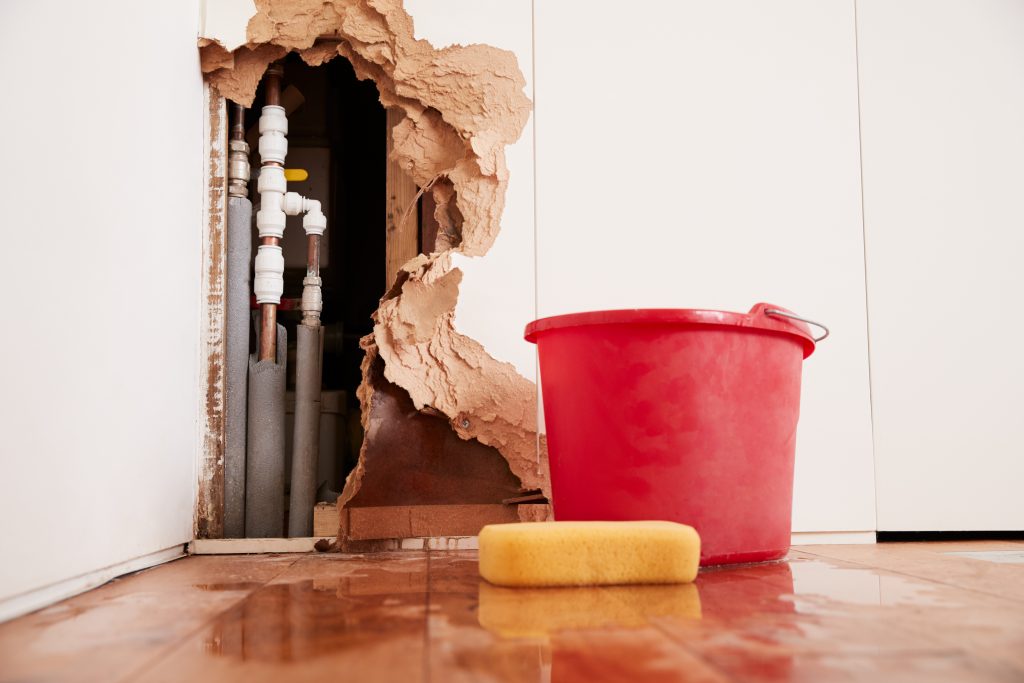6 Ways to Find Concealed Water Leakages in Your Home
6 Ways to Find Concealed Water Leakages in Your Home
Blog Article
Just how do you really feel with regards to Leaking water lines?

Early discovery of leaking water lines can alleviate a prospective catastrophe. Some little water leaks might not be noticeable.
1. Analyze the Water Meter
Every residence has a water meter. Checking it is a guaranteed manner in which aids you find leakages. For starters, switch off all the water resources. Make certain no one will purge, utilize the tap, shower, run the cleaning device or dish washer. From there, go to the meter as well as watch if it will transform. Considering that nobody is utilizing it, there must be no motions. That shows a fast-moving leakage if it relocates. If you detect no adjustments, wait an hour or two and check back once more. This implies you may have a slow leakage that can also be underground.
2. Inspect Water Usage
If you spot sudden changes, in spite of your consumption being the very same, it implies that you have leaks in your plumbing system. A sudden spike in your costs shows a fast-moving leakage.
Meanwhile, a constant rise each month, even with the exact same habits, reveals you have a slow leak that's also slowly rising. Call a plumber to completely check your property, especially if you feel a cozy area on your floor with piping underneath.
3. Do a Food Coloring Test
30% comes from toilets when it comes to water intake. Test to see if they are running effectively. Decline specks of food color in the storage tank and wait 10 mins. If the color in some way infiltrates your bowl during that time without flushing, there's a leak between the tank as well as dish.
4. Asses Outside Lines
Don't fail to remember to check your outside water lines also. Test faucets by connecting a yard tube. Must water leak out of the connection, you have a loosened rubber gasket. Change this and also make certain all connections are tight. It will certainly aid obtain it skillfully checked out as well as preserved annually if you've got a lawn sprinkler system. One little leakage can waste lots of water as well as surge your water costs.
5. Check and also Assess the Scenario
Home owners need to make it a routine to check under the sink counters and also inside closets for any type of bad odor or mold and mildew growth. These two red flags indicate a leak so timely attention is required. Doing regular inspections, also bi-annually, can save you from a major issue.
Examine for stainings and also compromising as a lot of pipelines and also appliances have a life expectations. If you presume leaking water lines in your plumbing system, do not wait for it to intensify.
Early discovery of leaking water lines can alleviate a possible catastrophe. Some tiny water leaks might not be noticeable. Checking it is a guaranteed means that aids you find leakages. One small leakage can lose loads of water as well as increase your water expense.
If you presume leaking water lines in your plumbing system, don't wait for it to rise.
WARNING SIGNS OF WATER LEAKAGE BEHIND THE WALL
PERSISTENT MUSTY ODORS
As water slowly drips from a leaky pipe inside the wall, flooring and sheetrock stay damp and develop an odor similar to wet cardboard. It generates a musty smell that can help you find hidden leaks.
MOLD IN UNUSUAL AREAS
Mold usually grows in wet areas like kitchens, baths and laundry rooms. If you spot the stuff on walls or baseboards in other rooms of the house, it’s a good indicator of undetected water leaks.
STAINS THAT GROW
When mold thrives around a leaky pipe, it sometimes takes hold on the inside surface of the affected wall. A growing stain on otherwise clean sheetrock is often your sign of a hidden plumbing problem.
PEELING OR BUBBLING WALLPAPER / PAINT
This clue is easy to miss in rooms that don’t get much use. When you see wallpaper separating along seams or paint bubbling or flaking off the wall, blame sheetrock that stays wet because of an undetected leak.
BUCKLED CEILINGS AND STAINED FLOORS
If ceilings or floors in bathrooms, kitchens or laundry areas develop structural problems, don’t rule out constant damp inside the walls. Wet sheetrock can affect adjacent framing, flooring and ceilings.
https://www.servicemasterbyzaba.com/blog/how-to-detect-water-leakage-in-walls/

We were brought to that editorial about Finding hidden leaks from a good friend on a different site. Enjoyed reading our write up? Please share it. Help other people find it. Thank-you for your time spent reading it.
Report this page